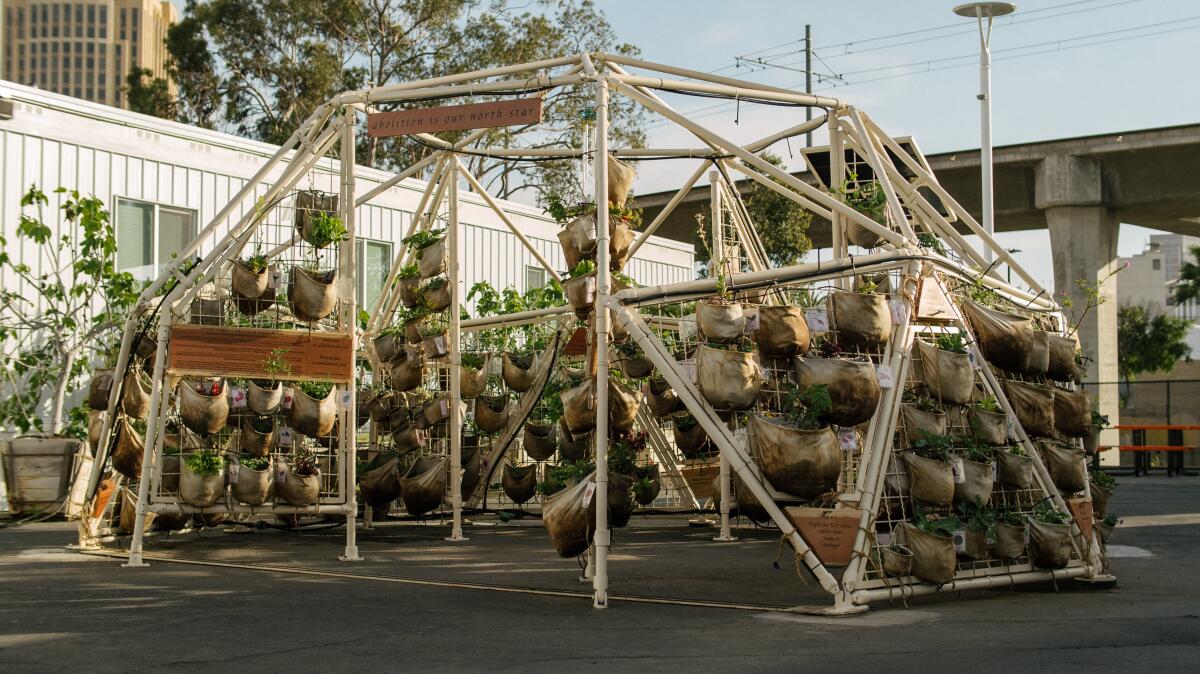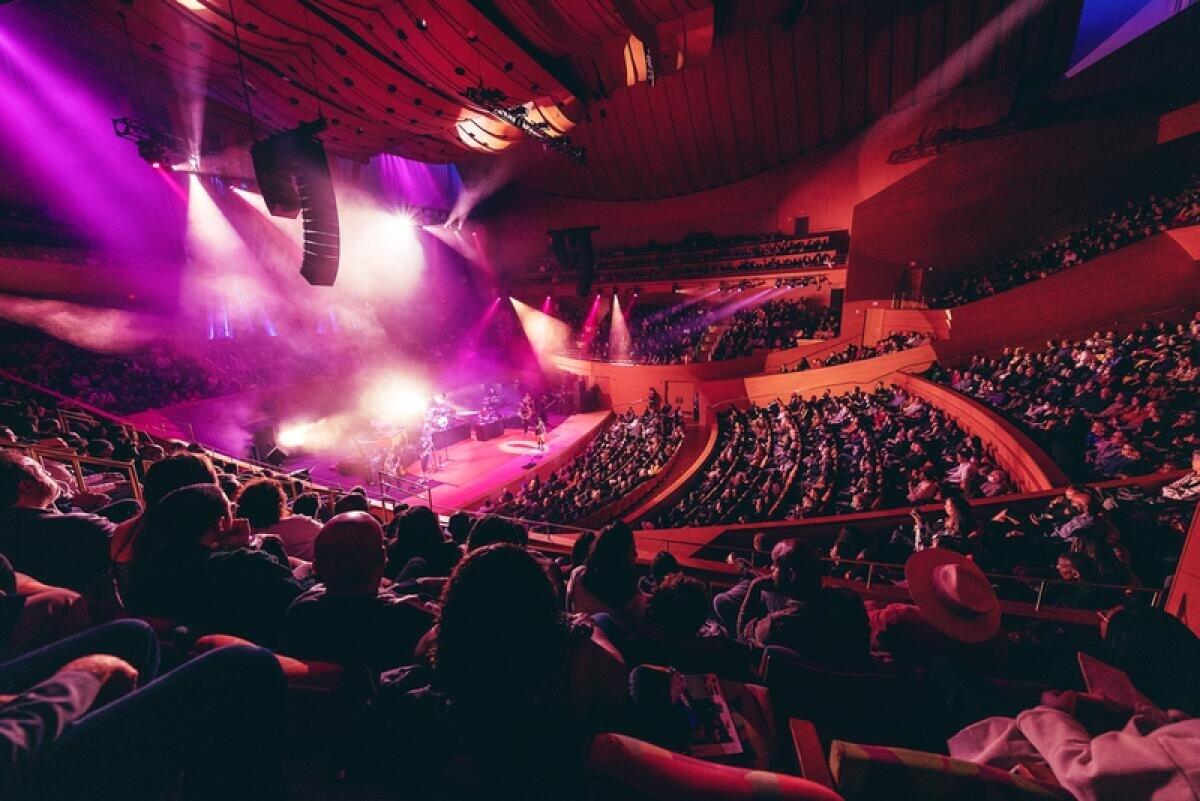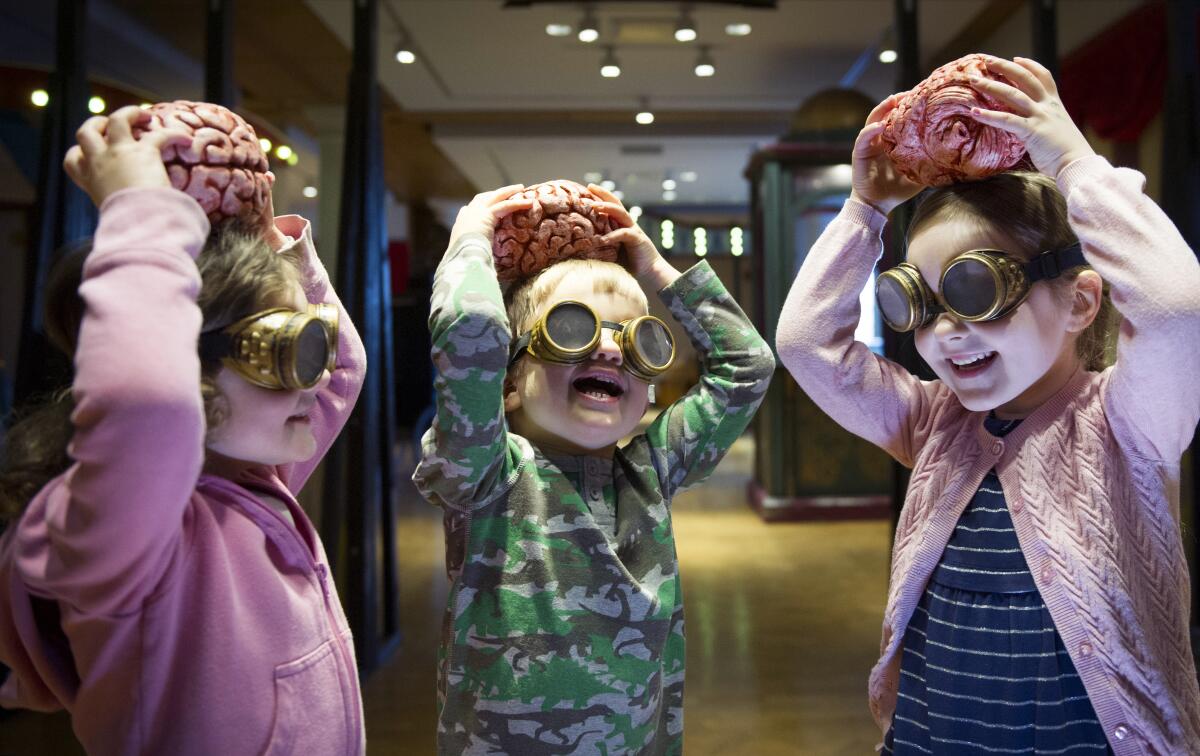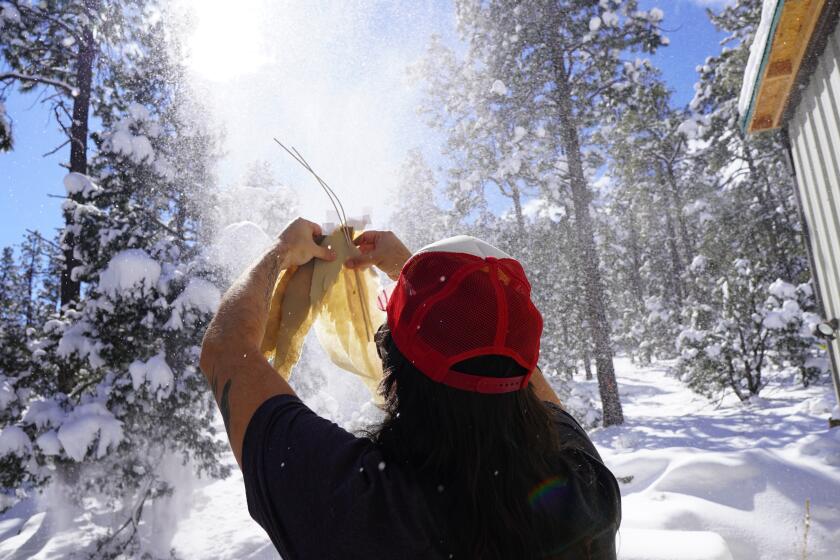Getty’s investment in ‘PST Art: Art & Science Collide’ grows to $19 million as vast public programming is set for 2024

- Share via
Five months of collaborative public programming will be part of the third iteration of Getty’s sprawling arts project, PST Art. Formerly known as Pacific Standard Time, this new incarnation, titled “PST Art: Art & Science Collide,” is set to debut in September of next year and feature cultural, educational, scientific, community and arts organizations from across Southern California, including the Los Angeles Philharmonic, CalTechLive, Crenshaw Dairy Mart, LACMA’s Art + Technology Lab and the New Children’s Museum.
The sprawling event will boast 60 exhibitions and more than 800 artists exploring topics such as ancient cosmology, artificial intelligence, Indigenous science fiction and environmental justice. The programming was announced in conjunction with a new round of Getty grants that bring the total price tag of Getty’s investment in 2024’s PST Art to $19 million. Funds benefit planned public programming by Clockshop; the Huntington Library, Art Museum, and Botanical Gardens; L.A. Dance Project; the Music Center; REDCAT (Roy and Edna Disney CalArts Theater); and Skirball Cultural Center, among others.

“You can see a multiplicity of viewpoints under one overarching theme, which allows you to think about it in many different ways,” said Getty Foundation Director Joan Weinstein. “If you just had one or two museums doing exhibitions on any one of these topics, it just would not add up to what it is when an entire community comes together and tackles it.”
Community is the driving force of the programming. Organizers will set up a big tent where everyone is welcome, and there will be something to appeal to a vast array of differing interests and tastes, added Katherine E. Fleming, president and CEO of the J. Paul Getty Trust.
Fleming said that task is made easier by the very nature of the Southern California arts scene, which she finds incredibly collaborative and inclusive.
“This project elicits this incredible interest amongst the organizations in what everyone else is doing, and how to work together,” Fleming said.
That togetherness will be fostered by community hubs established by three organizations — La Plaza de Cultura y Artes, LA Commons and the Lancaster Museum of Art and History. The hubs will be tasked with bringing programming to various neighborhoods through the activation of grassroots organizations, public agencies, schools and young people working to create and present their own art and science programs.
On May 9, the Getty announced the next edition of Pacific Standard Time, as well as a rebrand and project updates. The SoCal-wide multidisciplinary arts initiative, debuting in September 2024, will blend art and science.
Because it’s rooted in science, climate change is a major theme that emerged in the programming, with many participants showing particular interest in futurism rooted in tradition or indigeneity, which Fleming described as “looking to the future by looking back.”
Given the fraught conversation surrounding climate change, both Fleming and Weinstein were heartened to see that most participants approached the theme with optimism — and ideas about how to craft a better, more sustainable future. The Huntington, for example, will hold a youth summit on sustainability and climate change. The event will gather hundreds of high school students to focus on their solutions to the climate crisis and environmental degradation.
The work of the late Mother of Afrofuturism, Octavia E. Butler, who lived in Altadena, will also play a big role in next year’s proceedings. LACMA’s Art + Technology Lab is producing “The Monophobic Response,” a performance by American Artist. The performance centers on a 1936 rocket engine test in Arroyo Seco Canyon by a precursor to NASA’s JPL. An accurate replica of the rocket engine will be launched and actors will depict members of Butler’s fictional Earthseed community from her “Parable” novels.
“It’s pulling together all these amazing ideas about the origins of rocketry in L.A., Octavia Butler’s idea of climate refugees and leaving the planet for the stars, and contemporary issues,” said Weinstein. “And that same kind of Afrofuturist thread can be seen in the program that’s being done at the New Children’s Museum in San Diego, where they’re programming the year around Octavia Butler.”

The Getty is dubbing PST Art a “festival of festivals,” and one of the earliest entries into that category will be a free, three-day PST Art x Science Family Festival, staged in November 2024 in collaboration with Edinburgh Science. The event will feature hands-on workshops, demonstrations, performances, music and food. The outdoor festival is tailored for families and children ages 4 to 14.
Public participation is key to much of the programming, including at the Music Center, which is hosting an event called “The Gift.” Described as “a meditation on astrophysics,” the proceedings involve turning the outdoor plaza into a “reading room” with live music and digital presentations that shed light on astrophysics through storytelling based on clues gathered from the sky via telescope.
Events like this are illustrative of how naturally art and science combine to address the big questions of our complex modern age, said Weinstein.
“Here is an opportunity to come together to debate concepts of the different ways that we understand the world, and see what would come out of it,” she said.
More to Read
The biggest entertainment stories
Get our big stories about Hollywood, film, television, music, arts, culture and more right in your inbox as soon as they publish.
You may occasionally receive promotional content from the Los Angeles Times.












